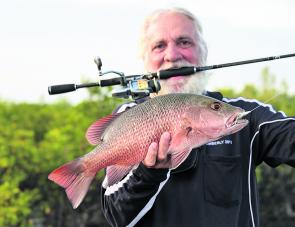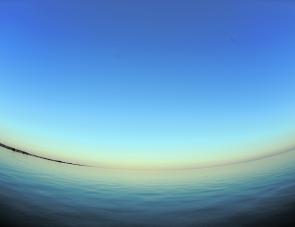October produced some great pockets of weather interspersed with some bordering on atrocious. Fortunately, November usually brings variable and light winds, which give anglers the chance to head farther afield.
The big game boys heading out from Cairns, Port Douglas and Cooktown will be hoping for some smooth runs out across the paddock, and many adventurous souls up in the Cape will be hoping for mirrored surfaces as they head out towards their favoured shoals and reefy grounds.
With warm water temperatures now combining with the end of spring and the spawning season for many of the far northern species, food webs will be super-charged and ready to go. Bluewater species such as mackerel will be aggregating, as will some of the coral reef fishes, meaning anglers fishing relatively shallow waters will be in for some superb fishing. Isolated patches of reef and shoals will be particularly fishy areas. Finding bait on your sounder or up on the surface will be a key to success.
A good combination for finding the most popular reef-dwelling species up in the Cape will be to find areas where current (heading into and out of neap tides) is pushing against structure, and bait is holding in the general area. Anchoring or drifting with baits, sort plastics, jigs, metal slices and hard body lures will all lead to success, however the common denominator for predators holding up will be the availability of a food source.
Golden snapper (fingermark) are a fantastic sporting and tablefish, and they’re reasonably prolific throughout Cape York and the entire North Australian coastline. They will feed throughout the tide around a huge variety of structure at various depths. But as voracious and competitive as these fish are, you will need to track down their prey before finding them in any descent numbers.
Other members of the Lutjanidae family are equally as popular with anglers. These include the iconic mangrove jack and red emperor as well as less-revered moses perch, stripies and so forth. All will respond to the same stimulus, and some will bite both night and day, moving in schools of similar size to different areas over the course of the tides. Finding rubbly ground anywhere between 8-40m of water with a scattering of life carpeting the bottom on the sounder will be as good a start as any.
On the West coast of Cape York, anglers will be faced with an incoming tide, often in the afternoon or early evening and sometimes late morning, which will test their ability to find fish feeding with more water around. Let’s face it, fish can be harder to track when there is more water for them to hide in, often making the bottom half of the tide easier to fish.
However, these tides can be worked to your advantage if you use patience and stealth to sneak into shallow areas where baitfish are congregating. Fishing late into the afternoon and early evening can be crucial to success, and avoiding the afternoon sea breeze will also be a key factor in finding cooperative fish.
Black jew and grunter in the bays, creeks and gutters are two species which move around with the tide and bite voraciously at key times. Discovering when these fish move up into shallow water and how they feed can make a huge difference to your catch rate. Fishing scented soft lures, prawn imitations and small vibes can produce surprising results, even off featureless sand. You just need to find current lines, back eddies and pressure points where the fish can hug the bottom with little effort and feed with the incoming tide.
Fishing plastics and poppers over shallow reef country for coral trout can be awesome in November. The chance to jump out of the boat and chase crayfish and other tasty morsels with a speargun is also high on the priority list at this time of year. Calmer weather will mean schools of garfish and fusiliers will be easy to spot around reef edges – and the tell-tale signs of trevally, queenfish, barracuda and mackerel herding them up can be seen from a long way off. I can't promise you will get back every lure you cast along a reef edge when the big toothy critters are around, but you will have a ball trying!
Last November I had the unusual privilege of taking my 5.8m South Wind on a 23-day Torres Strait excursion which began in Thursday Island, ventured all the way out to the Eastern Islands of Murray, Darnley and Stephen Islands and back through the central group of islands. Like the east coast of Cape York, it’s known for its ability to blow consistent trade winds throughout the dry season. However, the Torres Strait really turned on the glamorous weather in November. Day upon day of mirror-calm mornings with light north-easterly breezes in the afternoons before dropping away again the evenings.
The difference between copping a pounding from boxing seas (wind against tide) and skimming over shallow reef with every single coral head clearly visible beneath the hull is enormous. Covering vast distances in a small vessel can be exhilarating when conditions suit and treacherous when they don't, so comes first. If conditions look dangerous, DO NOT GO! Small boats are swamped and upturned every year when unbalanced or overloaded boats try to tackle sloppy conditions.
Reads: 1372
A decent mangrove jack taken on a vibe off the sand.

Cray tails from Albany Island.

A green jobfish lured over a shallow reef.

November mornings. This month brings the good weather windows we’ve all been waiting for.




